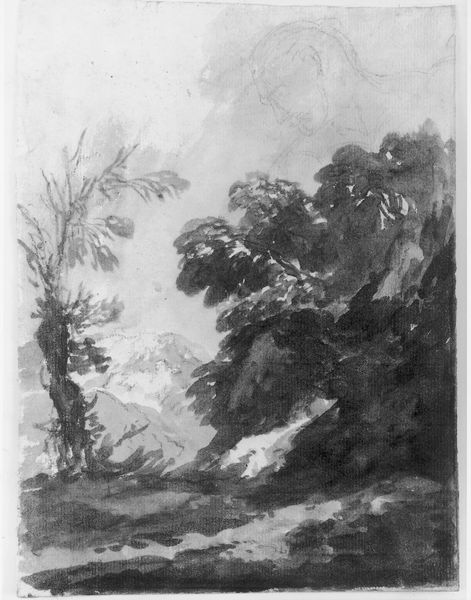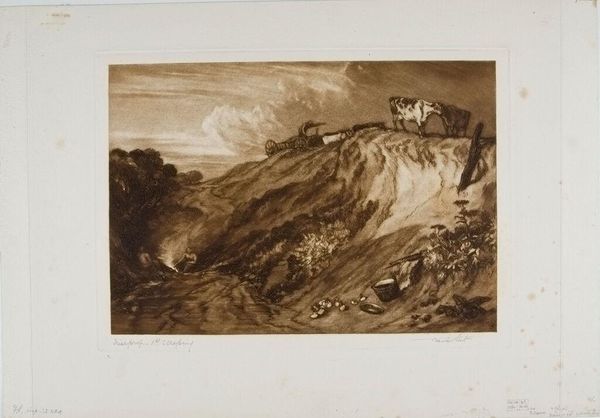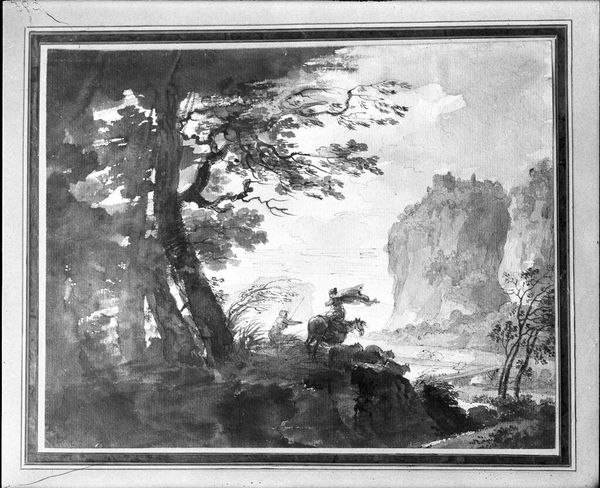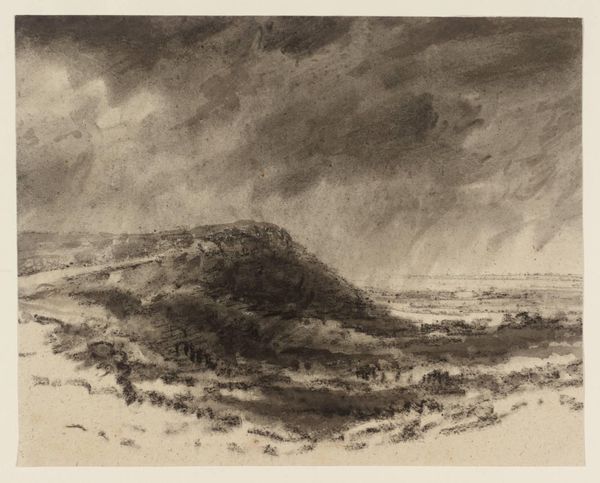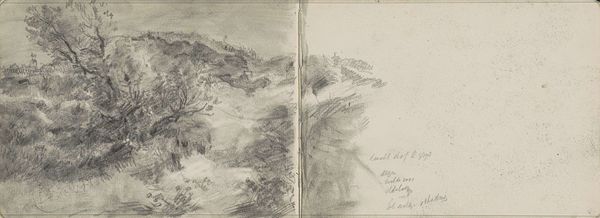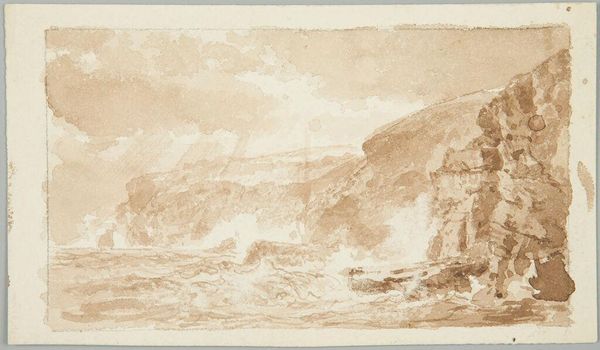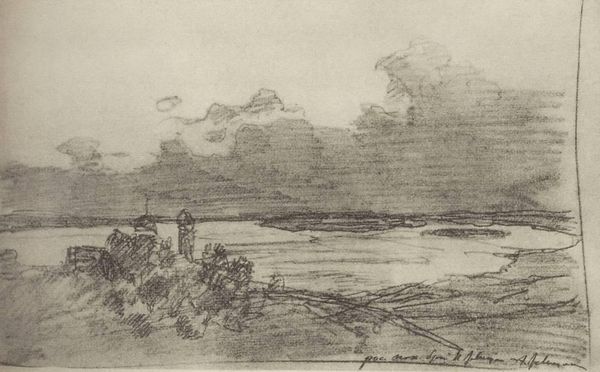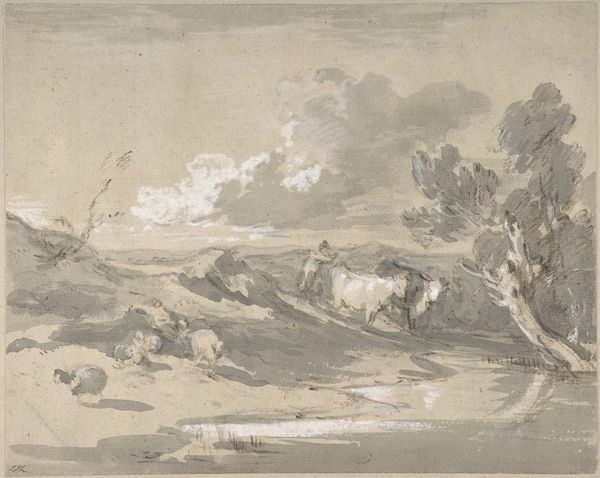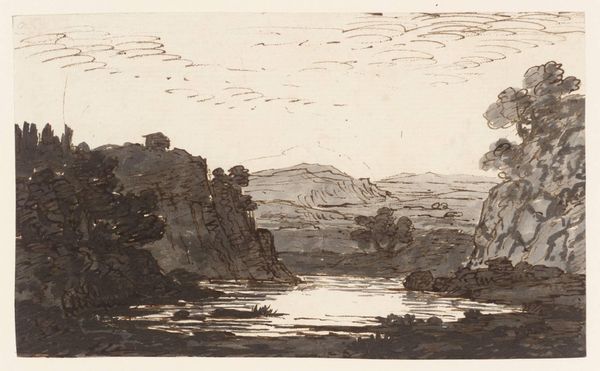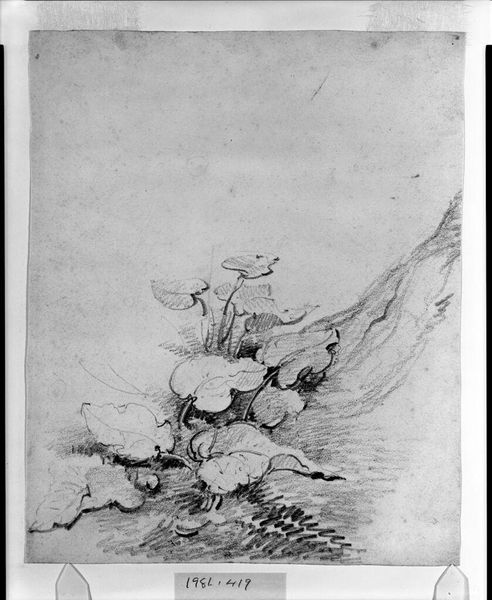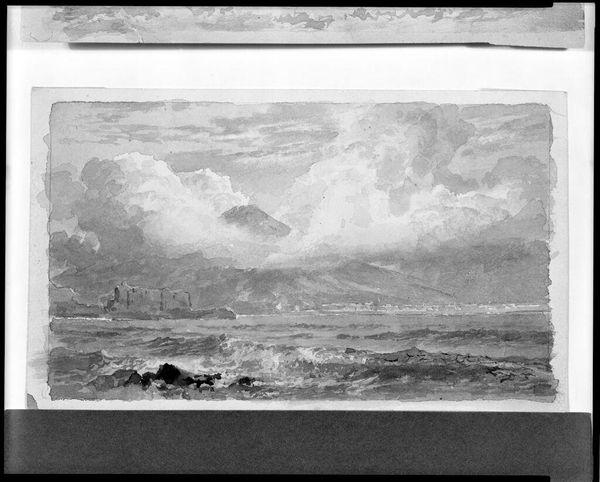
Mountain landscape with a fortress drawn on top of a fragmented male nude bending to the right 1630 - 1691
0:00
0:00
drawing, tempera
#
drawing
#
tempera
#
landscape
#
nature
#
11_renaissance
#
monochrome photography
#
monochrome
#
realism
#
monochrome
Dimensions: 294 mm (height) x 217 mm (width) (bladmaal)
Curator: Lieven Mehus’s intriguing “Mountain landscape with a fortress drawn on top of a fragmented male nude bending to the right,” created between 1630 and 1691 using tempera on drawing, now stands before us. What are your initial impressions? Editor: Immediately, the monochrome palette and the rough texture created by the tempera give the work a stark, almost desolate feel. It's raw; you can almost feel the hand of the artist shaping the landscape, not just depicting it. Curator: The integration of the nude figure is unusual, isn’t it? Barely discernible beneath the landscape, it speaks to me of hidden histories, a foundation upon which power or dominion – represented by the fortress – is constructed. A buried past perhaps, physically supporting the present. Editor: Absolutely, and thinking about the materials, tempera allowed for quick drying, indicating a level of urgency or immediacy in its production. Was this intended as a preliminary sketch, a foundation for something more? This technique certainly implies a working process, a physical struggle even. Curator: Intriguing idea! The fortress itself is a recurring symbol, often alluding to protection and control. I can’t help but wonder what cultural narratives Mehus was engaging with when layering the figure with such a dominating symbol. Editor: I find myself pondering on the choice of tempera versus a more "refined" oil painting for this subject matter. Tempera's connection to craft, to fresco traditions, brings this landscape down to earth, grounding the imagined power of the fortress within the realm of manual creation. It humanizes, if you will, this monumental landscape. Curator: It makes you wonder if the landscape is also a portrait, one that isn’t immediately recognizable but nonetheless profound in its veiled message. The merging of body and land might comment on society and power relations as something fluid and ever changing. Editor: Precisely! The landscape feels like a constructed reality. Thanks to the work's material presence, it shows its own creation; reminding us about labor, production, and intent behind any perceived landscape view. Curator: Considering its suggestive melding of disparate images, “Mountain landscape” asks us to contemplate the invisible and underlying stories shaping what we readily perceive. Editor: And the roughness, the inherent material honesty, asks us to look at art not as a finalized representation but as a document of labor and intentional production.
Comments
No comments
Be the first to comment and join the conversation on the ultimate creative platform.
